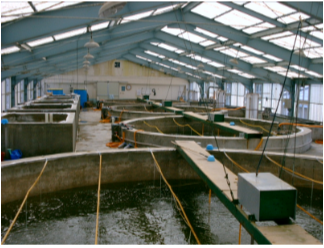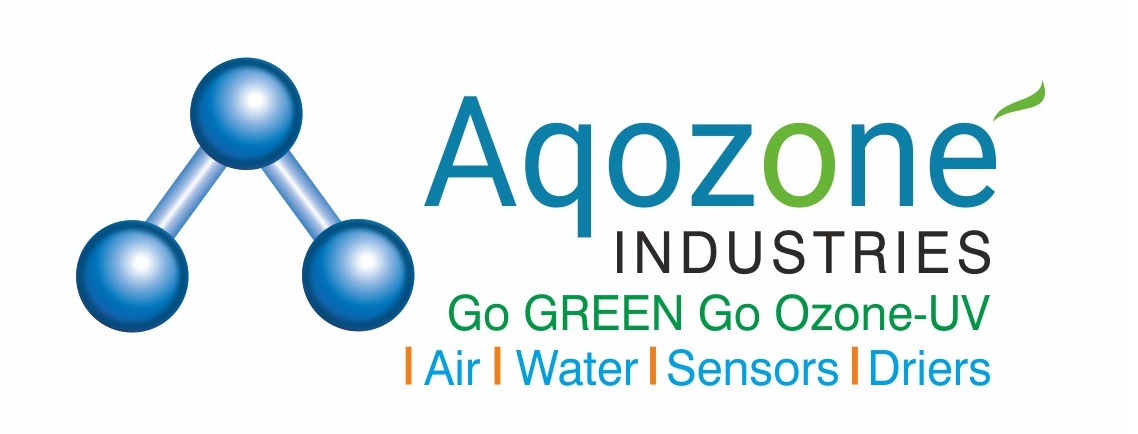
Aquaculture
DeBru Ozone is used in aquaculture applications to improve water quality, reduce pathogens, and increase efficiency of the water treatment systems.





Ozone use can keep water cleaner and fish healthier. Healthier fish take on feed faster and grow faster. Use of ozone in these applications has shown great payback on investment. Implementing ozone correctly is imperative as too much can damage the gills of the fish, however, too little if other systems are designed around ozone, can cause water quality issues. While the level of ozone and control is critical, the actual implementation is not too difficult in most applications. Most facilities already have some devices in place for overall water treatment and filtration, along with devices to increase oxygen levels in the water. Ozone can typically be added to air, or oxygen feeds that are already in place. Control of ozone can be done with simple ORP monitors that may already be on-site. By using the output signal of the ORP sensor into the ozone generators ozone levels in water can be controlled within fairly tight tolerances.
Fine and colloidal solids consist of particles 1-30 microns and 0.001-1 microns, respectively. The small size of the particles enables the solids to remain in suspension and avoid most mechanical separation methods. In addition, the accumulation of fine and colloidal solids can impair bio-filter nitrification efficiencies and stress fish stocks. By causing the solids to clump together, ozone facilitates their removal by foam-fractionation, filtration, and sedimentation.
Dissolved organic compounds (DOC’s) gives the water a characteristic tea- colored stain. Furthermore, DOC is non-biodegradable and accumulates based on feed input, water exchange rate, and solids removal rate. A high level of DOC can stress fish and reduce the nitrification efficiency of a biofilter. As a result of oxidation, dissolved organic matter is converted into products that are more readily nitrified.
Nitrite can accumulate as production intensifies and organic loadings on the bio-filter increase. Bacteria that process ammonia into nitrite operate more efficiently under high organic loadings than bacteria that process nitrite to nitrate. High levels of nitrite can be toxic to fish. Data available indicate that nitrite levels as low as 2.8 parts per million (ppm) can reduce the growth of fingerlings by 5%. By oxidizing nitrite directly to nitrate and reducing organic loading, ozone improves bio-filtration and nitrification.
Facilities need to reduce pathogen loads introduced via the source water, effluent waters must also be disinfected before being released into the environment. Ozone can effectively inactivate a wide range of bacterial, viral, fungal, and protozoan fish pathogens. The effectiveness of ozone treatment depends on ozone concentration, length of ozone exposure (contact time), pathogen loads, and levels of organic matter. Virtually eliminated fish mortality and disease saving thousands of dollars for fish farms. Increased fish weight gain in the same time (about 40% in our client experience) increasing fish farm profits. Also, eliminated the bad taste in fish. For example, there is a stigma attached to the Tilapia taste, the fish farm that uses ozone, renamed Tilapia into Northern Perch to be fair to the taste improvement and marketing it very successfully.
After fish are harvested they are typically stored on ice. Another great use of ozone is ozonated ice. By dissolving ozone into water and quickly freezing this water, ozone is essentially trapped within the ice. Ozone is an excellent antimicrobial agent, and is commonly used to extend shelf life of many food products. By locking ozone into the ice, and placing fish on this ice, the benefit of ozone is slowly released to extend the shelf life, and improve the quality of your fish while storing and shipping to your end user. Should you have questions on implementing ozone in your aquaculture or fish farming application, give us a call, or e-mail. We would be glad to share our previous experience with you.
We are a professional water and air disinfection company with experience in water, waste water and effluent water treatment, UV water disinfection, Heat pumps and dryers, Aquaculture and Hydrophonics equipment suppliers and consultants. And a having a strong team in designing automation for various applications. We manufacture in house and commission at the sites in India and Outside .
